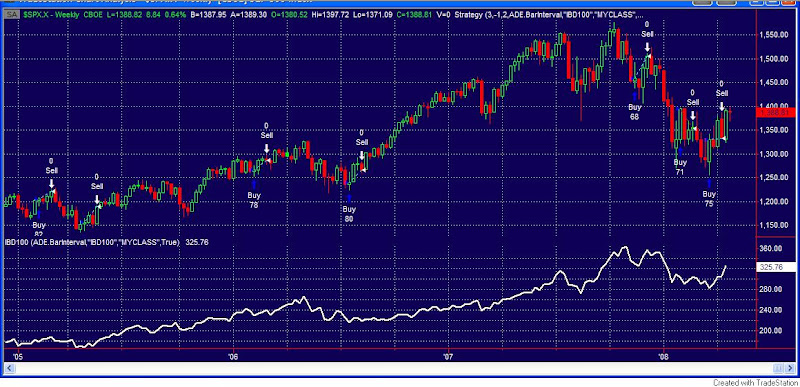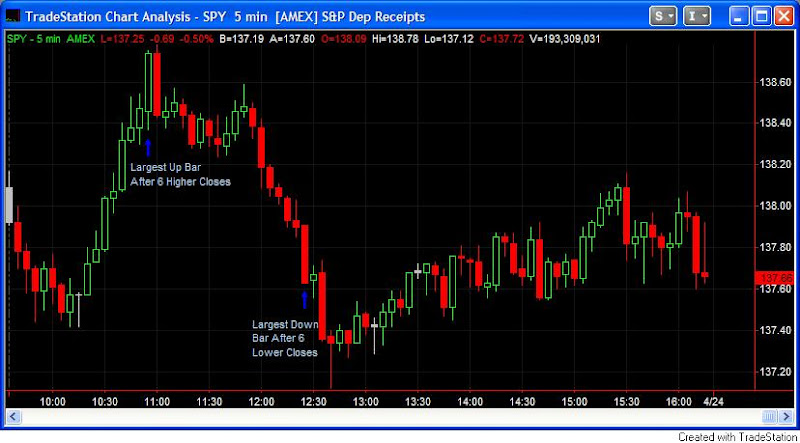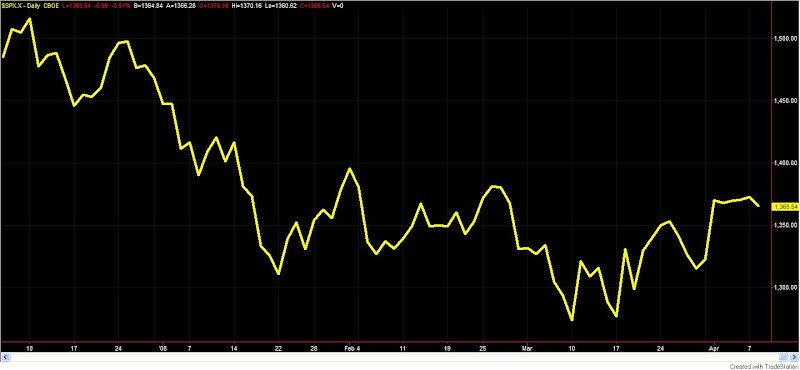After the close today, Intel had a good report. Everyone seems happy (unless you’re short Intel.) The Nasdaq futures are juiced and the S&P’s are even up quite a bit as I write this. We stand a good chance of seeing a gap up tomorrow morning. There are some economic reports to deal with before the opening bell so things can clearly change, but it seems like a good idea to expect we may gap in the morning and to plan for it.
Previously I’ve looked at large gaps up as well as large gaps down, and how the market reacted to them in both uptrends and downtrends. Today I will look at mid-sized gaps up.
As a reminder I previously defined a large gap as one over 0.75% for the SPY. The mid-sized gaps I’m looking at tonight are gaps between 0.25% and 0.75%. Once again I will break the results out between mid-sized gaps up in uptrends and mid-sized gaps up in downtrends. You’ll find the results to be quite different from both each other and the large gap studies.
For uptrend vs. downtrend I kept it simple and used the same definition as last time. If the market closes above its 200-day simple moving average, it’s in an uptrend. If the market closes below it, then it’s in a downtrend.
I looked at 3626 trading days going back to 11/17/93. Of those there were 613 mid-sized gaps up in uptrends and 223 mid-sized gaps up in downtrends.
Buying at the open and selling at the close when the market was in an uptrend would have been profitable about 50% of the time. In total the market would have gained 3% over the 613 trades. On a per-trade basis that’s basically break even. Of those gaps up 356 (58%) filled at some point during the day. (A fill in this case is defined as a move back down to the previous day’s close.)
Buying at the open and selling at the close when the market was in a downtrend would have been profitable 54% of the time. In total, though this strategy would have LOST you almost 66% over 223 trades. Per trade that’s close to a 0.3% loss on average from open to close. Of those mid-sized gaps up, 165 (73%) filled at some point during the day. Even with a slightly higher winning percentage these stats are significantly worse than those above dealing with uptrends.
We previously found that large gaps up typically lead to more upside during a downtrend. Most likely this is because shorts get trapped and the market runs as they scramble to cover. Mid-sized gaps are a different animal. They are not as scary for the shorts. Shorts may even see it as an opportunity to add more exposure, while longs look to take gift profits. Whatever the reason, the long-tem downtrend is generally able to re-assert itself during the day and those that bought into the early morning excitement get punished.
When deciding how to approach a gap up in the morning, make sure you consider at least two things: 1) Long-term trend of the market. 2) The size of the gap. They both matter.






